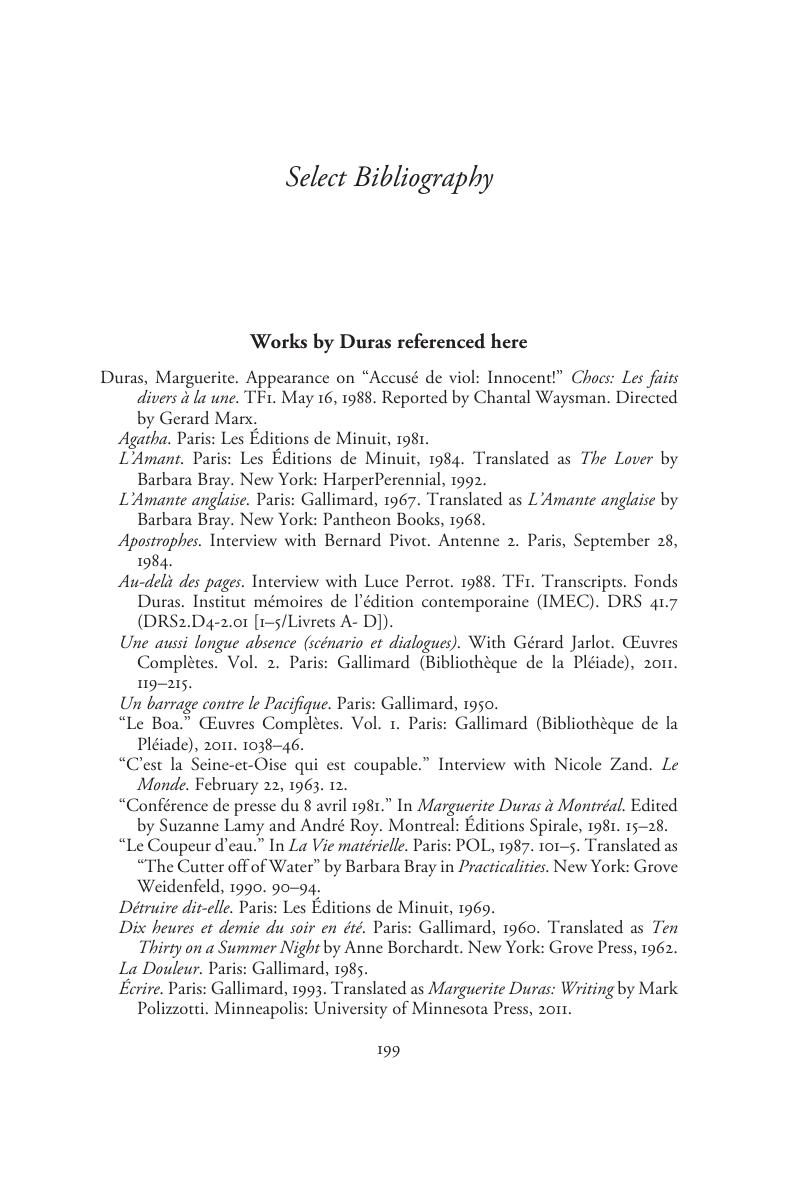Book contents
- The Crimes of Marguerite Duras
- The Crimes of Marguerite Duras
- Copyright page
- Contents
- Illustrations
- Acknowledgements
- Introduction Marguerite Duras and the Media
- Chapter 1 Marguerite Duras, Journalist
- Chapter 2 Criminal Affinities
- Chapter 3 Copycat Crimes
- Chapter 4 Crimes of Passion
- Chapter 5 Media Crimes
- Conclusion The Crimes of Marguerite Duras
- Select Bibliography
- Index
- References
Select Bibliography
Published online by Cambridge University Press: 09 June 2020
- The Crimes of Marguerite Duras
- The Crimes of Marguerite Duras
- Copyright page
- Contents
- Illustrations
- Acknowledgements
- Introduction Marguerite Duras and the Media
- Chapter 1 Marguerite Duras, Journalist
- Chapter 2 Criminal Affinities
- Chapter 3 Copycat Crimes
- Chapter 4 Crimes of Passion
- Chapter 5 Media Crimes
- Conclusion The Crimes of Marguerite Duras
- Select Bibliography
- Index
- References
Summary

- Type
- Chapter
- Information
- The Crimes of Marguerite DurasLiterature and the Media in Twentieth-Century France, pp. 199 - 215Publisher: Cambridge University PressPrint publication year: 2020

